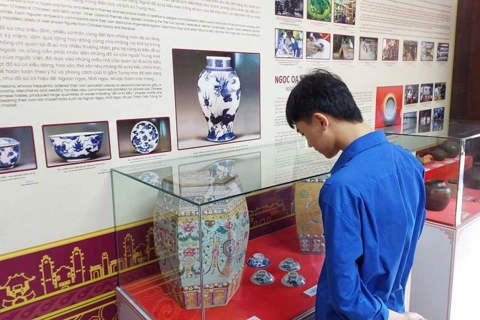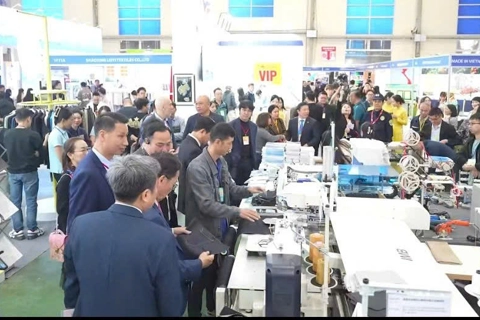Hanoi partners with Lam Dong to boost silk supply for craft villages
This partnership is expected to revitalize Hanoi’s handicraft silk industry and strengthen Vietnam’s leading global supplier of high-quality silk textiles.
THE HANOI TIMES — Hanoi plans to strengthen its partnership with Lam Dong Province in the Central Highlands to ensure a consistent supply of high-quality raw silk materials, largely addressing shortages facing producers in the city's traditional weaving villages, including Van Phuc, La Khe, and Phung Xa.

An artisan works on a traditional silk product in Van Phuc Silk Village. Photo: The Hanoi Department of Agriculture and Environment.
The Hanoi Department of Agriculture and Environment reports that most silk weaving workshops in the capital struggle to access quality materials. Therefore, a reliable source of domestic silk is expected to help them improve product consistency, reduce costs, and increase their competitiveness in international markets.
Recently, authorities in Hanoi and Lam Dong have agreed to support the linking of value chains between businesses and cooperatives in both regions. Van Phuc Silk Village, one of Hanoi's most iconic silk craft areas, has expressed interest in sourcing silk from Lam Dong and has requested strict quality standards during the production and harvesting processes.
Van Phuc, which currently relies on a raw silk supply from Ha Nam, Lam Dong, and Quang Nam provinces, hopes that the new partnership will stabilize its sourcing.
Tran Thi Ngoc Lan, Vice President of the Van Phuc Silk Craft Village Association in Hanoi’s Ha Dong District, said that scarce and expensive domestic input has forced some facilities to turn to foreign alternatives, which compromises the quality of Hanoi’s silk products.
Van Phuc uses roughly 10.8 tons of raw silk per year to produce nearly 100,000 meters of silk, including 39,000 meters of traditional silk and 61,000 meters of glossy silk.
Other silk craft villages in Hanoi, including La Khe in Ha Dong District and Phung Xa in My Duc District, are also affected by material shortages.
To ease supply, Phan Thi Thuan, Director of My Duc Mulberry Silk Company, said her firm farms mulberry and raises silkworms in the Day River area. The company coordinates the entire supply chain, linking growers, silkworm breeders, and weavers to ensure stable production and output.
Expanding silk trade ties
The Hanoi Department of Agricutlure and Environment plans to organize national and international trade promotion events focused on the silk sector to enhance business connections with Lam Dong, expanding the value chain and fostering long-term cooperation in raw material supply and product distribution.
As part of the agreement, the Lam Dong provincial Department of Agriculture and Environment will provide data and facilitate exchanges between silk producers, cooperatives, and farming households. It will also coordinate the development of specialized mulberry cultivation and silkworm farming zones tailored to Lam Dong's diverse ecological conditions.
Currently, Lam Dong has about 700 hectares of mulberry cultivation, with 300 hectares dedicated to higher-yielding varieties. Lam Dong leads the country in sericulture, accounting for 70% of Vietnam’s mulberry acreage and silkworm cocoon production. Its cocoon has been exported to India, China (including Taiwan), Bangladesh, and South Korea.
Lam Dong recognized its six traditional silk villages: Dong Anh 3 and Dong Anh 5 in Lam Ha District; Loc Tan in Bao Lam District; Dak Mang in Dam Rong District; and Xuan Phong and Da Kho in Da Huoai District.
This partnership between Hanoi and Lam Dong is expected to largely strengthen Vietnam’s leading global supplier of high-quality silk textiles.











